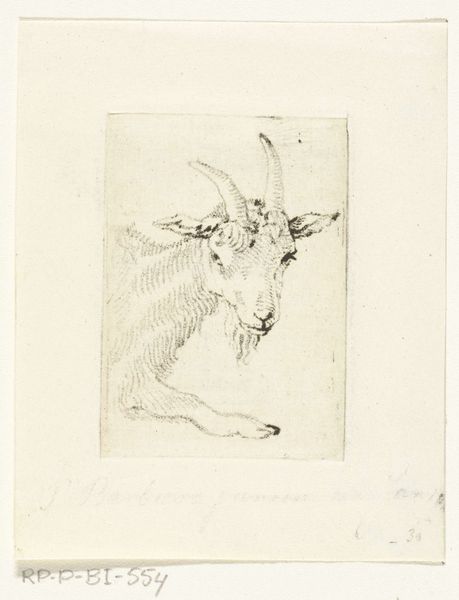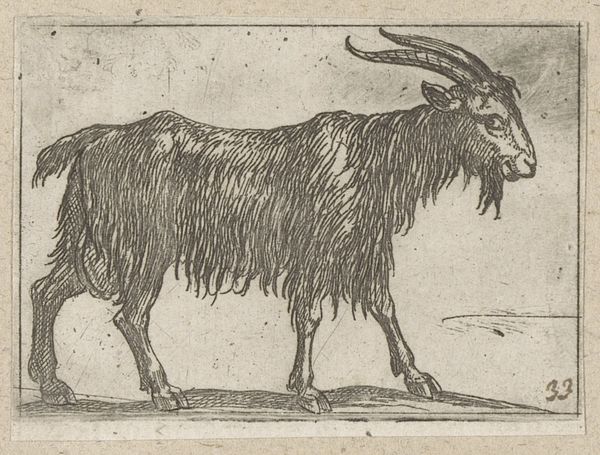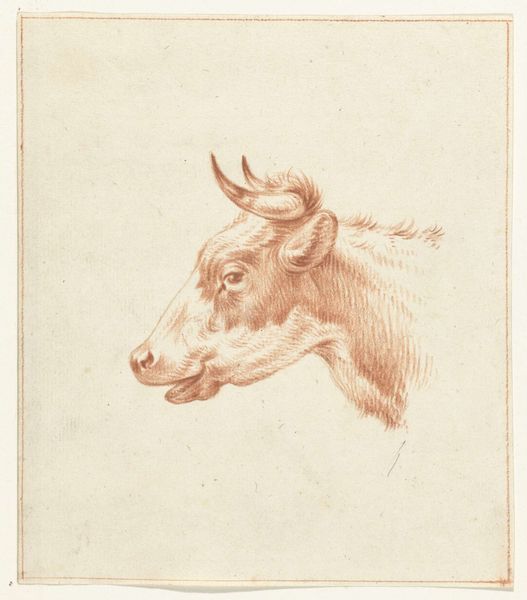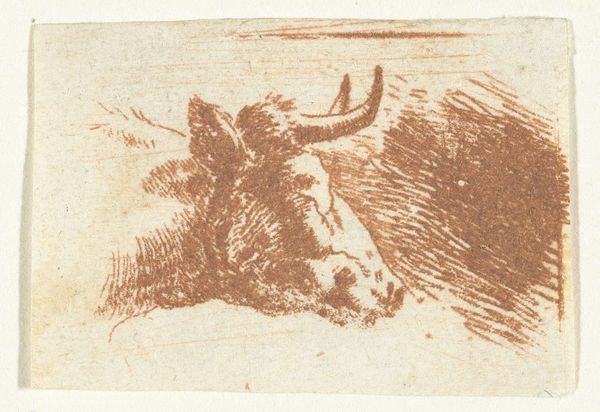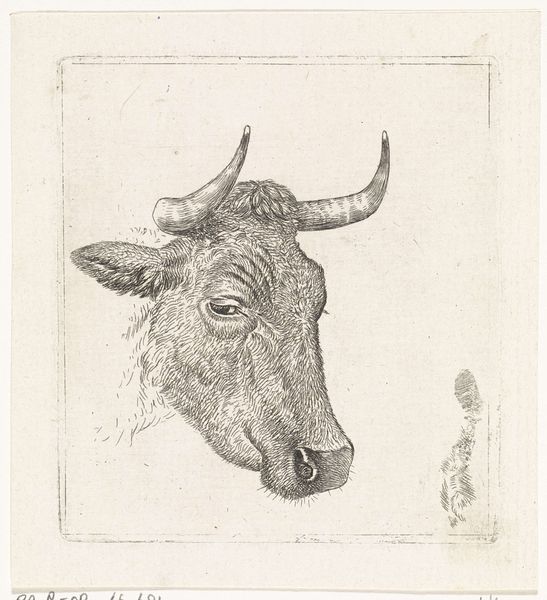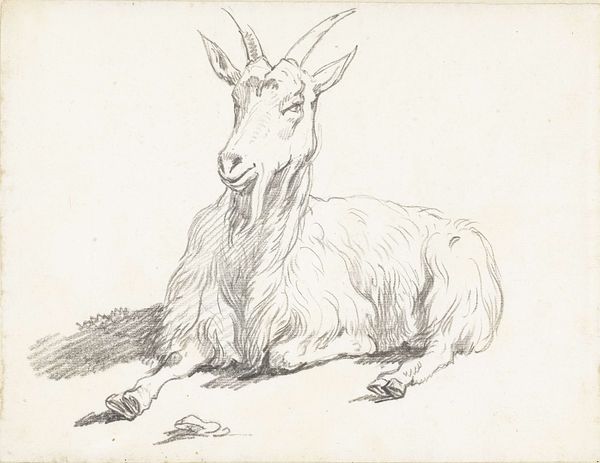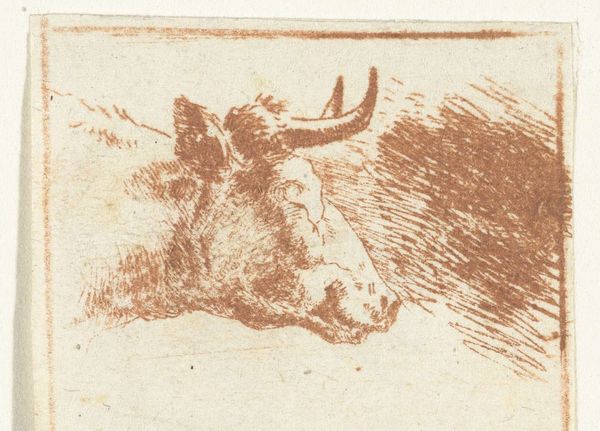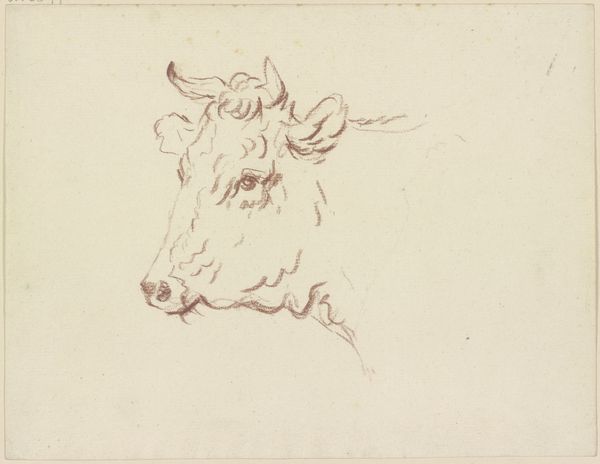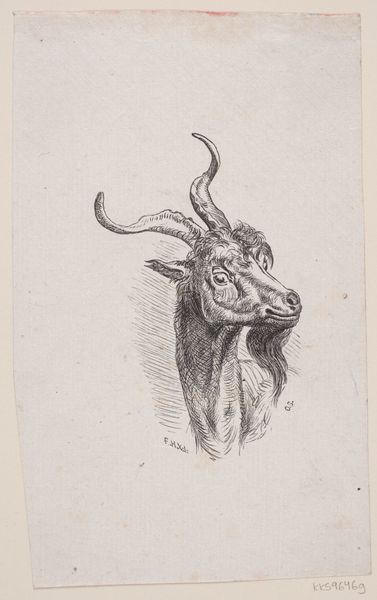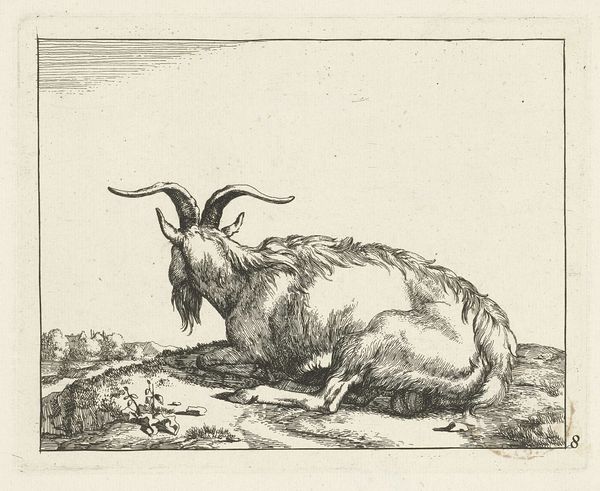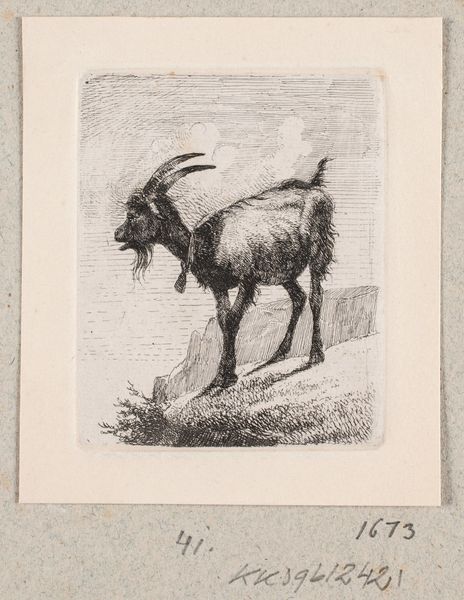
drawing, pen
#
portrait
#
drawing
#
light pencil work
#
quirky sketch
#
animal
#
pencil sketch
#
personal sketchbook
#
idea generation sketch
#
pen-ink sketch
#
sketchbook drawing
#
pen
#
pencil work
#
sketchbook art
#
realism
#
initial sketch
Dimensions: height 51 mm, width 38 mm
Copyright: Rijks Museum: Open Domain
Vincent van der Vinne van Lee made this etching of a goat in the Netherlands, sometime in the first three-quarters of the 19th century. This goat's head, contained by the borders of the work, is a reminder of the important place livestock and agriculture held in Dutch society. As the Netherlands became more urbanized in this period, prints like this offered a view onto a traditional rural life. The fine lines and small scale of the etching speak to a culture of craft and detail, perhaps even a nostalgia for older forms of art making in the face of industrialization. The work may also be a study, with the artist honing his skills in animal representation. Understanding the context of this piece—the social values, economic shifts, and artistic traditions of the Netherlands—requires delving into historical records, agricultural studies, and the artist's own biography. In doing so, we can more fully appreciate this unassuming image and its place in a changing world.
Comments
No comments
Be the first to comment and join the conversation on the ultimate creative platform.


